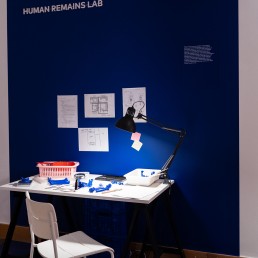HUMAN REMAINS
Every part of a human skeleton carries all traces of life experiences and provides much information about the lifestyles and conditions of the past. For instance, just by looking at skeletal material, archaeologists can make predictions in matters such as demographic profiles (age, sex, etc.), stress levels, illnesses, nutrition, physical activities, and biological relationships (kinship, social structure, and migration). They can identify the height and the size of Çatalhöyük individuals and the roughness of the conditions they worked in. Furthermore, they can also understand whether their working fields were close to their houses or not.
Marco Milella from Zurich University divides his time at Çatalhöyük between the field and the labs. He is searching for signs of illness or trauma in buried skeletons, such as cutting marks. Most of his tasks have gotten easier to carry out through 3D software, which allows him to analyze and understand changes in skeleton shapes. His research, which includes measuring and testing skeletons by using this technology, brings new perspectives to the ways we interpret people’s lives and deaths.



